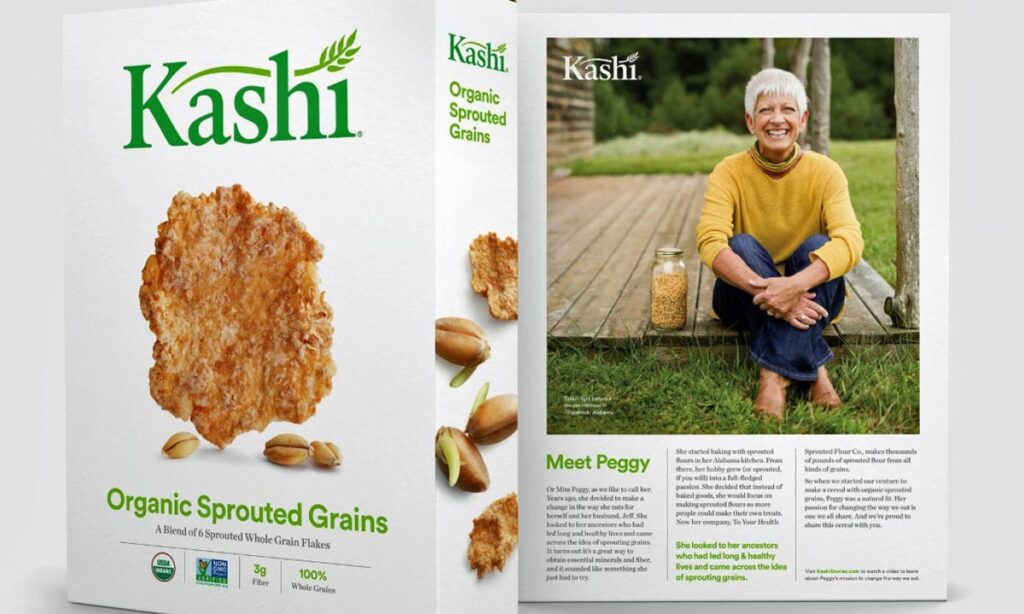Once Upon a Time: Storytelling in Branding
Allow me to share with you one interesting thing…
From the time of our forefathers, who sat around fires and told tales, to the present generation, who spend consecutive hours streaming shows on Netflix, it is evident that narratives have always enthralled humankind. Our brains are designed to focus on good stories, such as those with solid characters, conflicts, and resolutions.
But why? Because stories help us understand the world better. They motivate, teach and entertain us in ways that stick for a long time. Through lively accounts, we live multiple lives by proxy, visit different places without moving an inch, and tackle eternal verities that may remain elusive. That said, hunger for storytelling drives businesses, brands, etc., because it’s part of being human.
Table of Contents
“Once Upon a Time” in Marketing

Long ago, brands relied upon one-way advertising that shouted their messages into the void. They would interrupt us with billboards, TV commercials, radio ads, etc. But we live in an ad-blind society now; most of us are jaded by the hard sell.
On the other hand, good storytelling can help a brand connect with its audience deeply. Stories draw people in and touch their hearts. Corporate jargon is stripped away in favour of relatability, empathy and authenticity.
So why not join me on a little journey? I’d like to explore why storytelling works so well for branding — what it does, how it does it — with some examples along the way, plus benefits and best practices. All you have to do is sit back and let me spin my yarn…
Why Storytelling in Branding Works So Darn Well
Okay, let’s quit the buildup. Let’s look at some of the reasons why storytelling in branding is such a vital asset for business and identity:
1. Grabs Attention & Increases Engagement
In a constantly distracted world, getting people to pay attention to you takes a lot of work. However, if you tell an exciting story, individuals pause scrolling through their phones or laptops to listen. According to neurobiologists who researched this topic, our brains are programmed for stories – even lighting up certain parts like the sensory cortex while engaged with narrative inputs.
2. Builds Emotional Connections
Are you tired of discussing features and benefits that no one cares about? Start speaking about feelings! Brand narratives allow us to share our missions, personalities and values viscerally, leading to empathy and trust; data makes us think, and stories make us feel.
3. Aids in Brand Remembrance
We have all sat through those presentations where everything went overhead, right? That never happens when someone tells a good story because hearing things from the heart creates more profound, more lasting memories than any bullet point stats or marketing claims could ever hope for – according to a study done back in 2007, people recall information 22 times better if it's embedded within a narrative context.
4. Let Audiences In On Your World
People love getting lost in stories where they can live someone else’s life vicariously through different characters and plot twists, so it only makes sense that we shouldn’t be afraid to share parts of ourselves with others, too, right? Clever brand telling does just this by inviting readers into your organisation’s story world, thereby allowing them to see what you stand for as well as the well-known team behind products plus services offered – all told through the lens of fictional narration, which gives added depth because the person experiencing has chance walk mile shoes another
The Critical Elements of a Captivating Brand Story

Okay, so we've established why businesses should tap into the art of storytelling. But crafting an impactful brand narrative isn't as simple as saying, “Once upon a time…
Just like any riveting book, movie, or play, your brand stories require several vital ingredients to resonate truly:
1) A Relatable Protagonist
It would help to have a central protagonist your audience can empathise with and root for. This doesn't have to be an individual – it can be your company, product/service, or even your customers themselves. Give them human qualities: hopes, struggles, values, etc.
2) Conflict & Drama
What's a story without conflict? The narrative needs drama, tension, and obstacles to overcome. This hooks your audience's emotions as they wonder what happens next. For example, you could focus on the challenges your company or customers faced that your product/service helped resolve.
3) An Authentic Voice
People can smell a phoney from a mile away. Don't let your brand stories feel like contrived marketing fluff. Inject authenticity by drawing from real people, events, and emotions. Find your distinctive personality and voice, then speak to your audience human-to-human. Self-aware humour helps, too.
4) A Logical, Compelling Narrative Arc
Every great story has a logical flow with setup, rising action, climax, and resolution. Your brand tales should follow a similar path, moving audiences through an engaging progression. Build anticipation and satisfy their curiosity with crucial details and coherence.
5) Emotionally Resonant Themes
The best stories tap into universal themes that connect with people's deepest hopes, fears, and motivations. These could include ambition, perseverance, community, love, or any other fundamental human concept. Interweave your company's values with these more significant ideas.
6) Vivid Sensory Details
Transport your audience through rich descriptions tapping the five senses. What sights, sounds, textures, tastes, and smells make your brand's world feel real? Paint pictures with evocative language that taps the brain's rational and emotional sides.
7) A Moral Payoff
Whether subtle or overt, the resolution to your brand tale should strive to leave audiences with a rewarding moral they can take away. How have your characters, products, or services made the world better? Appeal to people's hopes for meaning and social betterment.
Spectacular Storytelling Examples

Enough theory. Let's talk about some brands that have nailed the narrative approach:
Airbnb's “Belong Anywhere” Campaign
Instead of telling bed stats, Airbnb shares stories about travel, joy, adventure and human connection through beautifully crafted vignettes. In one video spot, you are transported to an otherworldly night as an American man and his Palestinian host share music, food and cultural exchange on a rooftop. This is their “belonging anywhere” mission realised in 60 seconds.
Chipotle's “Cultivate A Better World”
Building on its “Food With Integrity” positioning, the fast-casual chain releases emotionally charged short films/games that tackle unethical practices in the food industry. For example, their haunting animated short film “The Scarecrow” paints a picture of dystopian factory farming and mass-produced junk food – all while championing sustainable sourcing through clever, shareable bites.
Dove’s Long-Running “Real Beauty” Stories
Rather than selling anti-ageing creams like most beauty brands targeting women over 40 do, Dove has spent more than 15 years producing mini documentary-style stories about body confidence featuring inspirational real women who reject narrow beauty ideals/stereotypes. Their “Real Beauty Sketches” video on flawed self-perception went viral with a simple but powerful message: you’re more beautiful than you think.
How to Unleash Storytelling in Your Brand

Okay, you get the picture of storytelling's tremendous upside. But where should you bring narratives into your business? Here are some prime opportunities:
1) On Your Website
That dusty old “About Us” page is screaming for a story revamp. Use your site to showcase your brand's journey, mission, and unique personality through an origin story, meet-the-team profiles, behind-the-scenes peeks, and more. Text, videos, photos – utilise all mediums.
2) Advertising & Marketing Campaigns
From digital shorts and Instagram stories to print ads and mailed storytelling magazines – any of your brand's paid marketing channels can live and breathe through compelling narratives. REI's iconic there together episodic films are a fabulous example.
3) Social Media Content
Short, visual-driven stories work incredibly well on social, grabbing attention in endless feeds. Share colourful anecdotes about your products in use, employees on the job, or customers gushing with delight in bite-sized tales perfect for platforms like Instagram and TikTok.
4) Product Packaging & Retailing
Turn physical products into storytelling canvases detailing brand history, inspiration, and provenance. In-store environments provide opportunities for interactive narrative experiences. Take a page from Saddleback Leather's masterfully woven tales of Mexican artisanship adorning their luggage collections.
5) Events & Experiences
Build your live events, pop-ups, conferences, and customer experiences around narrative arcs layered with meaning. Lean into theatrics, sensory branding, and opportunities for attendees to feel immersed in your brand story. Few forget the impact of outstanding experiential storytelling like The Louvre's jaw-dropping immersive exhibition during Dubai's World Expo.
6) Internal Communications & Training
Innovative companies understand the value of making employees active participants and advocates for the brand narrative. Share authentic founding stories, communicate vision through allegories, and create rituals grounded in your lore during onboarding, meetings, and training sessions. It breeds ownership and alignment.
7) Customer Support & Sales Conversations
Even seemingly dry interactions can be infused with stories to forge real human connections with your audience. Have support teams draw from a library of relevant anecdotes, case studies, and success stories while fielding inquiries. Salespeople can leverage vivid tales of your products in action for more persuasive selling.
Behind the Curtain: Principles for Crafting Killer Brand Stories

Getting the structure and delivery of your narratives right is only half the battle. Here are some guiding principles for brands aiming to master the whole art of storytelling:
Be Audience-Obsessed: Deeply understand your target personas' psychographics, needs, challenges, and worldviews. Craft stories through their lens that speak directly to their lived realities. Become an empathetic student of the humans you want to captivate.
Live Your Stories: Don't just regurgitate some cobbled-together fiction. The most compelling tales spring directly from the truths woven into your company's culture, people, and heritage. Dig into actual events, ethos, and experiences. Then, amplify them with dramatic storytelling techniques.
Embrace Multimedia Storytelling: From words to visuals, audio, interactive media, and more – stories can be creatively expressed across many mediums and channels. Find the formats best suited for reaching your particular viewers through their preferred content consumption.
Foster a Storytelling Culture: Infuse every facet of your business with a commitment to crafting and sharing compelling narratives. Cultivate these skills across teams through training, tools, creative operations, and centralised story management. Hire storytellers on your marketing teams, too.
Iterate & Optimise: Crafting transcendent brand stories is an art and science. Develop listening systems that capture audience feedback and monitor sentiment, shares, and engagement. Continuously refine plots, characters, delivery, and distribution based on data and qualitative insights.
The (Never-Ending) Story Continues
The world's an endless cycle of personal and collective tales – births, deaths, triumphs, struggles, discoveries, and connections. As long as we humans keep moving through the eternal cycles of life, sharing our experiences through parables will remain vital.
Innovative brands understand this. They weave their companies into the fabric of society's grand narratives by building a brand mythology. A collection of stories so diverse yet cohesive that they construct a vibrant, living universe people want to inhabit and pass on to others.
Done well, every touchpoint, action, campaign, experience, and message flows like chapters in your organisation's ever-expanding book of fables. Your customers become avid readers, invested in your characters, and anticipate the next instalment. Your brand ethos and values radiate through organic storytelling that captures hearts, minds, and wallets alike.
It's an endless dance between author and audience, intimately intertwined. It may be time you sat down and started penning the next great chapter in your brand's captivating saga. The world's waiting to be bewitched by your tale.
Storytelling in Branding FAQs
Aren't brand stories just another form of contrived marketing?
The difference is in the authenticity and craft. A hollow marketing claim quickly gets tuned out, while a genuinely compelling narrative tapping human truths and emotions instantly grabs attention. Brand storytelling done right resonates because it springs from a real place.
What if we're a B2B brand selling something unsexy? Can stories still work?
Absolutely! Be aware of thinking brand tales only apply to consumer products. From industrial cleaning supplies to enterprise software, every business has roots, people, journeys, and struggles worth narrating. Get creative with your perspective and find an angle that connects emotionally.
How do I identify the correct stories to tell for my brand?
Start by mapping out your brand's core values, mission, and what makes your offering unique or distinctive. Then, look for actual events, customer anecdotes, employee profiles, founder stories, or case studies that vividly illustrate those critical traits in a narrative form. Involve people across your organisation to crowdsource the most compelling raw material.
What's more critical – telling one cohesive brand story or crafting multiple separate narratives?
Both are valid approaches depending on your goals. An over-arching signature tale can provide consistency and more profound meaning, tying your brand together. However, rotating shorter vignettes offers more flexibility in experimenting with diverse perspectives and storylines. The key is ensuring your stories are “on-brand”, whether unified or individual pieces.
How long does a brand story need to be?
There's no set length requirement. Flash fiction and long-form epics both have places in brand storytelling. The ideal format depends on factors like your story's complexity, messaging objectives, the audience attention span for the channel/medium, etc. That said, shorter stories between 30 seconds and 5 minutes work best for capturing modern viewers.
What's better – writing stories in-house or outsourcing to creative agencies?
Neither approach is inherently superior. Internal stakeholders offer unparalleled institutional knowledge and authenticity. However, professional writers and filmmakers can bring objectivity and elevated creative execution. The happy medium is often a hybrid model leveraging in-house SMEs to mine narrative gems that outside creative partners then storyboard and produce.
Do you have any tips for measuring the effectiveness of brand storytelling efforts?
Both quantitative and qualitative metrics offer insights. Analyse traditional performance indicators like lead gen, sales impacts, social engagement, and audience survey data to gauge narratives' influence on the funnel. However, sentiment-mapping techniques should also be monitored, looking at emotional resonance, brand affinity lifts, and community discussions to understand the human impact deeply—Synthesise data sources to iterate.
I'm worried about my brand story becoming stale over time. How do I keep it fresh?
Treat your narratives as living, breathing assets to nurture, not codified gospel continuously. Have dedicated owners responsible for injecting new perspectives, highlighting brand storytelling through novel channels and mediums, and evolving tales to remain culturally relevant. Solicit inputs from both internal creative teams and external partners.
What's one brand story misstep I need to avoid?
Inauthenticity. Audiences can sniff out a disingenuous story from a mile away, eroding rather than building brand trust and equity. Stay within your company's genuine truths, personality, and principles when storytelling. Don't emulate others' fables or chase virality at the expense of staying true to your essence. The second you prioritise fiction over fact is when things go awry.
